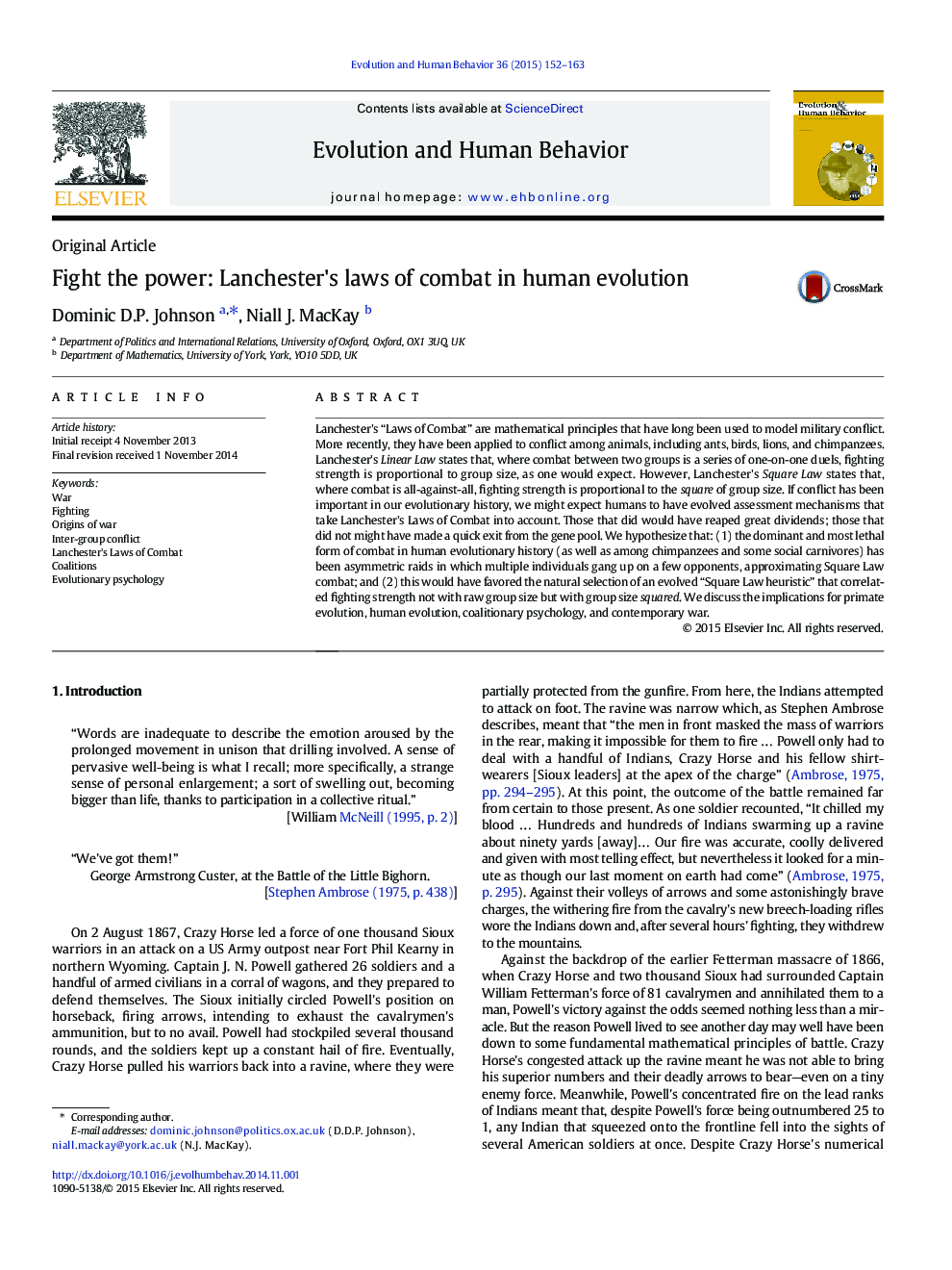| Article ID | Journal | Published Year | Pages | File Type |
|---|---|---|---|---|
| 10463997 | Evolution and Human Behavior | 2015 | 12 Pages |
Abstract
Lanchester's “Laws of Combat” are mathematical principles that have long been used to model military conflict. More recently, they have been applied to conflict among animals, including ants, birds, lions, and chimpanzees. Lanchester's Linear Law states that, where combat between two groups is a series of one-on-one duels, fighting strength is proportional to group size, as one would expect. However, Lanchester's Square Law states that, where combat is all-against-all, fighting strength is proportional to the square of group size. If conflict has been important in our evolutionary history, we might expect humans to have evolved assessment mechanisms that take Lanchester's Laws of Combat into account. Those that did would have reaped great dividends; those that did not might have made a quick exit from the gene pool. We hypothesize that: (1) the dominant and most lethal form of combat in human evolutionary history (as well as among chimpanzees and some social carnivores) has been asymmetric raids in which multiple individuals gang up on a few opponents, approximating Square Law combat; and (2) this would have favored the natural selection of an evolved “Square Law heuristic” that correlated fighting strength not with raw group size but with group size squared. We discuss the implications for primate evolution, human evolution, coalitionary psychology, and contemporary war.
Related Topics
Life Sciences
Agricultural and Biological Sciences
Ecology, Evolution, Behavior and Systematics
Authors
Dominic D.P. Johnson, Niall J. MacKay,
